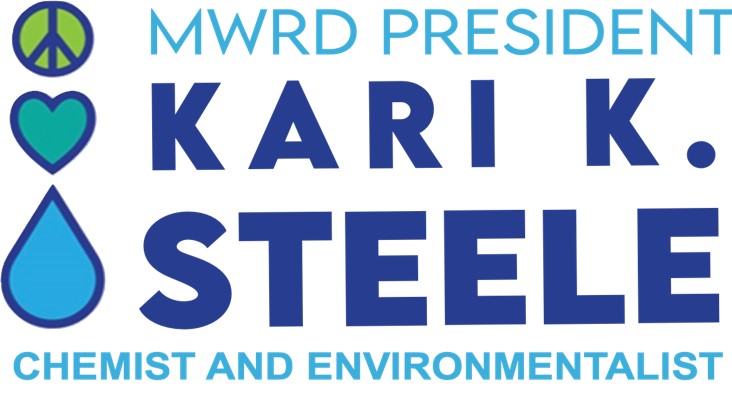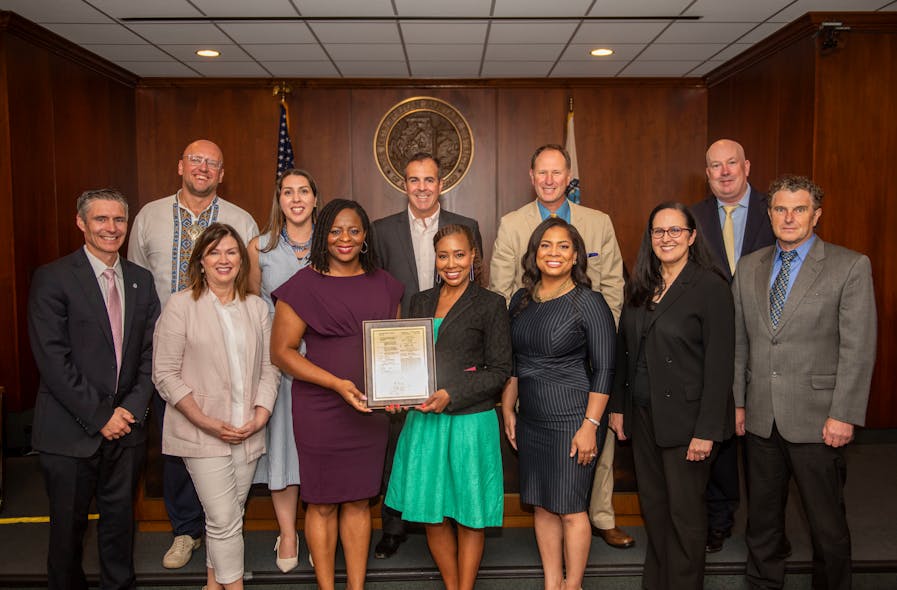MWRD, ISU Research Foundation receive patent for pollutant removal via algae harvesting.
MWRD, ISU Research Foundation receive patent for pollutant removal via algae harvesting.
Source: Wastewater Digest, 9/7/23
A groundbreaking technology to remove dissolved solids from wastewater, as part of a unique algae recovery system that aims to reduce carbon emissions and recover nutrients, has received a United States patent.
The Metropolitan Water Reclamation District of Greater Chicago (MWRD) announced that it and its partners at Iowa State University Research Foundation (ISURF) have received a U.S. patent for the technology.
U.S. Patent No. 11,691,902 was officially granted to the MWRD and ISURF on July 4, 2023. Filed in 2020, the patent awards MWRD and ISURF for its development of technology that removes dissolved solids from wastewater, as part of a larger apparatus known as the Revolving Algal Biofilm system (RAB). This burgeoning technology used for growing algae is owned by ISURF.
Because of its many applications, numerous patents were subsequently filed for the larger system, underscoring the range of impacts an RAB system could have on wastewater treatment, resource recovery and water quality. As part of the MWRD’s collaborative research on nutrient removal using the RAB technology with partners at ISURF and Gross-Wen Technologies Inc. (GWT), it led to another remarkable breakthrough: the MWRD discovered it could also remove dissolved pollutants from wastewater.
“This is a major accomplishment in water reclamation that could forever change the way we view nutrient recovery, carbon reduction and solids removal from wastewater,” said MWRD President Kari K. Steele. “We congratulate our Monitoring and Research Department and partners at Iowa State University Research Foundation and Gross-Wen Technologies for their development of this project, our Maintenance and Operations Department for its installation and our Law Department for securing this momentous patent.”
Originally conceived for agricultural purposes by GWT’s founders, Dr. Martin Gross and Dr. Zhiyou Wen, while at Iowa State University, the reactor system uses vertical conveyor belts that revolve in a continual loop and cycle through wastewater, sunlight and air to grow multiple layers of algae. The algae are mechanically scraped from the belts and can then be utilized as a raw material in the manufacture of a variety of products, such as algae pellets as a slow-release fertilizer, sustainable aviation fuel and bioplastics.
MWRD and GWT are currently studying a second pilot project using the RAB at MWRD’s Stickney Water Reclamation Plant to focus on ammonia removal after a successful research trial at its O’Brien Water Reclamation Plant in Skokie that found a way to naturally uptake phosphorus and nitrogen from wastewater.
The successful utility-university-private partnership builds upon the project team’s previous recognition in 2020 when they received the “Innovation Collaboration of the Year Award” from the Algae Biomass Organization and the “Ralph Fuhrman Medal for Outstanding Water Quality Academic-Practice Collaboration” from the Water Environment Federation. The project has also garnered $100,000 in grant funding from Imagine H2O’s Urban Water Challenge and a $240,000 grant from the U.S. Department of Energy’s (DOE’s) Office of Technology Transitions (OTT).
“Congratulations to our engineers, scientists and partners at Iowa State University for receiving this well-earned patent,” said MWRD Commissioner Eira L. Corral Sepúlveda. “In more than a century of progress and advancements to treat our region’s wastewater and protect our water resources, this is yet another milestone in our work to improve our water environment.”
If the RAB technology is employed to remove total dissolved solids (TDS) from wastewater at treatment utilities in the U.S., MWRD can negotiate royalty terms with ISURF. While potential applications in water reuse are anticipated, MWRD has not yet conducted a market analysis. While the technology may not currently find an application at the MWRD, it is reassuring to witness the organization’s unwavering commitment to innovation, as their relentless contributions continue to drive the industry into uncharted territories.



